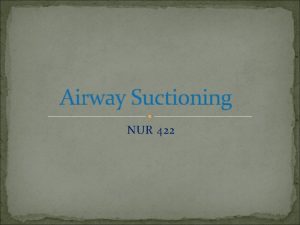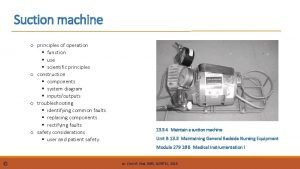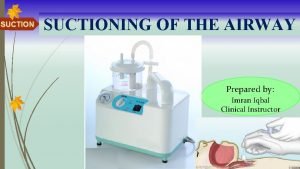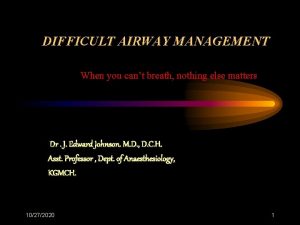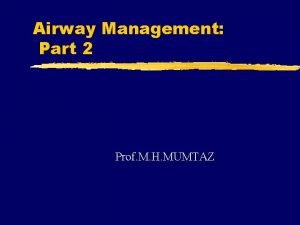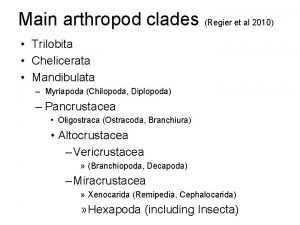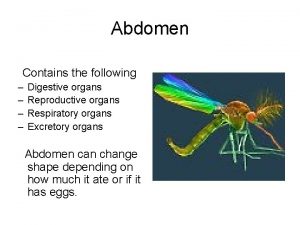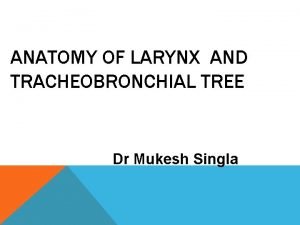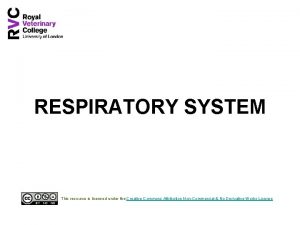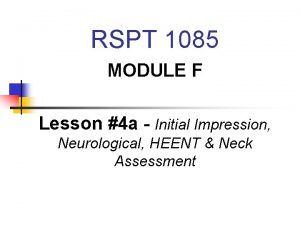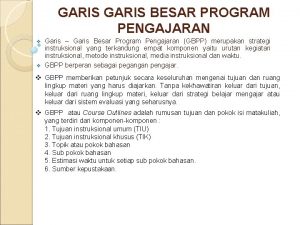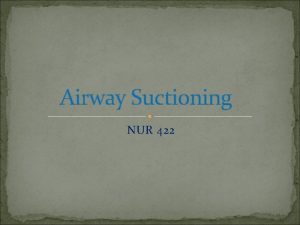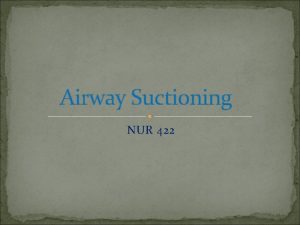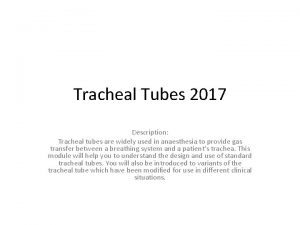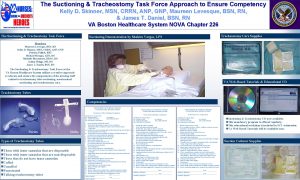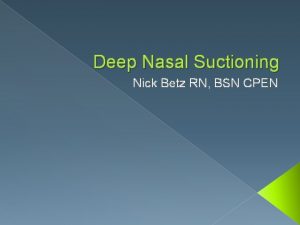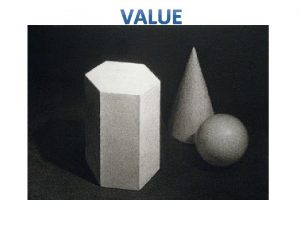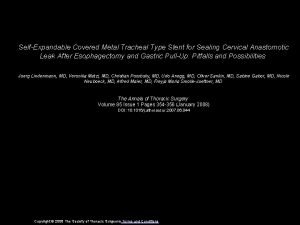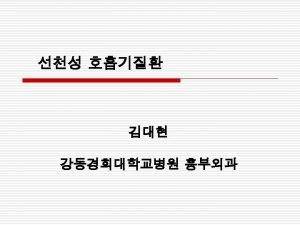Tracheal Suctioning Outlines q Definition q Assessment q















- Slides: 15

Tracheal Suctioning

Outlines q. Definition q. Assessment q. Purposes q. Procedure q. Indications q. Complications q. Equipment

Definition It is the mechanical aspiration of tracheal secretions using a negative pressure by passing a sterile catheter through the endotracheal or tracheostomy tube. Tracheal suctioning is always performed as a sterile procedure to prevent nosocomial pneumonia.

Purposes 1. Maintain a patent airway 2. Remove pulmonary secretions, blood, vomitus, or foreign material from the airway. 3. To obtain sample of tracheal secretion for laboratory analysis 4. Improve gas exchange

Indications 1. Secretions in the tube 2. Acute respiratory distress 3. Frequent or sustained coughing 4. Suspected aspiration of gastric or upper airway secretion.

5. Auscultation of adventitious lung sounds(e. g. crackles) over the trachea or main stem bronchi or both 6. Increase in peak airway pressures when the patient is on MV 7. Gradual or sudden decrease in arterial blood oxygen (Pao 2)

Methods of tracheal tube suctioning: A. Open suction technique: Following disconnection of the endotracheal or tracheostomy tube from any ventilator tubing or oxygen sources, a single-use suction catheter is inserted into the open end of the tube.

B. Closed suction technique (in-line suctioning): A multi-use suction catheter inside a sterile plastic sleeve is inserted through a special diaphragm attached to the end of the endotracheal or tracheostomy tube.


Equipment 1. Portable or wall suction unit with tubing 2. A commercially prepared suction kit with an appropriate size catheter or – Sterile suction catheter with Y-port in the appropriate size – Sterile, disposable container

– Sterile gloves – Towel or waterproof pad – Goggles and mask or face shield – Additional PPE, as indicated – Disposable, clean glove – Resuscitation bag connected to 100% oxygen 3. Assistant (optional)

Assessment: • Assess lung sounds • Assess respiratory status, including respiratory rate and depth • Assess patient for signs of respiratory distress, such as nasal flaring, retractions, or grunting.

• Assess for pain and the potential to cause pain during the intervention. • Assess appropriate suction catheter depth.

steps

Complications • Hypoxemia • Infection • Cardiac dysrhythmias • Bleeding • Trauma • Pain • Atelactasis • Tracheal mucosal damage
 Oropharyngeal suctioning
Oropharyngeal suctioning Suction machine diagram
Suction machine diagram Dr imran iqbal
Dr imran iqbal Neuraminidase
Neuraminidase Occepital
Occepital Ztechnique
Ztechnique Discover magazine
Discover magazine Reproductive
Reproductive Tracheobronchial
Tracheobronchial Dr beverly fischer md
Dr beverly fischer md Dog lung
Dog lung Respiratory system voice box
Respiratory system voice box Tracheal deviation mnemonic
Tracheal deviation mnemonic What is subordination in outlining
What is subordination in outlining Outline learning objectives
Outline learning objectives Kairos talk outlines
Kairos talk outlines
